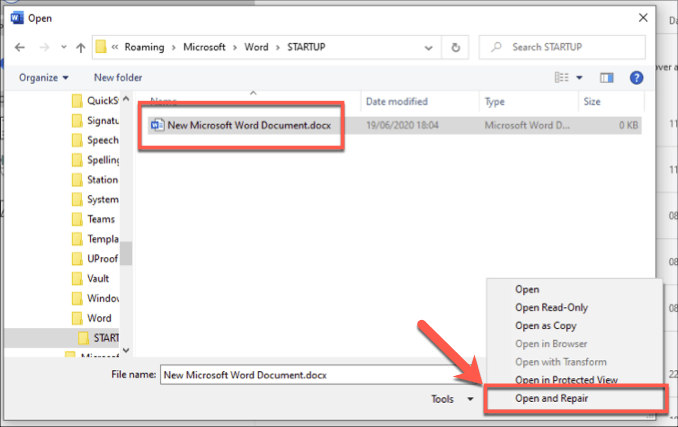
#Find autosaved word documents windows 10 windows
Click on Windows Explorer icon on the task bar.So in the example above, this would mean going to the "N:" drive. If you are not using the same computer, then you have to go to the file location where Word auto-saved the file. You can then click through them and choose any that you want to keep, using "Save As" to save a copy of the file. When you open it, Word will automatically check for any auto-saved files on the left-hand side of the screen. Firstly, if you are at the same computer you were using when the problem occurred and nobody else has used it in the meantime, then once you have been able to restart or log back on to the computer, open Word again. There are two ways to recover information. In this example, that means that at most you will have lost 10 minutes worth of work. If the computer you are using crashes while you are working on a document, you will probably have lost some information, but you should be able to recover the last saved autoversion. If Word is closed normally these auto recovery files are not saved. They mean that every 10 minutes, a copy of the work in progress will be automatically saved to the user's N:drive. These are the standard settings for users on IT Services computers. Shown below this is the AutoRecover file location which in this example is "N:\" - ie the individual N:drive for the user. Tick 'Keep the last saved autoversion if I close without saving' check box.In the minutes box, type or select a number to determine how often you want to save files eg every 10 minutes.Tick the Save AutoRecover information every check box.In Word 2016, you can see how this is set up in the Options. But AutoRecover does not replace regularly saving your files, you must still do this. Of course, the best way to guard against this risk is to be in the habit of regularly saving your files while you are working (every 10 minutes is recommended).įortunately many programs, such as Microsoft Word, have an in-built "auto-save" function that automatically backs up a copy of your work every few minutes.

This can be very frustrating and lead to a lot of extra work. If you are part-way through working on a document when due to circumstances outside your control (such as the computer crashing or a network problem), you are unable to continue, there is a danger that the changes you have made will have been lost. The shorter the time-lapse, the lower the chances of data loss due to power failures or possible Microsoft Word shutdowns.1643How can I recover a Word document I was working on when my computer crashed? For example, it is possible to set how often the recovery file should be created.

You can also use this feature in the cloud by placing the path in a folder that you have synchronized with any storage service, such as Google Drive, Dropbox, or OneDrive.įinally, do not forget that other related options are available to you. A good reason for changing the directory of the autosave file is to make it more accessible, perhaps by placing it in the documents folder. When you are done, remember to save your changes by clicking Ok. If you click on the Browse button, you can select a new directory for the temporary Word file. In the settings window, open the Save section and look at the path next to the AutoRecover file location. If you wish to modify the directory, simply go to the File menu and click on Options. Therefore, in general terms, it will not be necessary to locate the temporary Word file manually. You need to know that Word automatically detects unexpected shutdowns and offers the user to recover their work on restart. In this way, you can use the file explorer to recover any document that you have not been able to save.


 0 kommentar(er)
0 kommentar(er)
